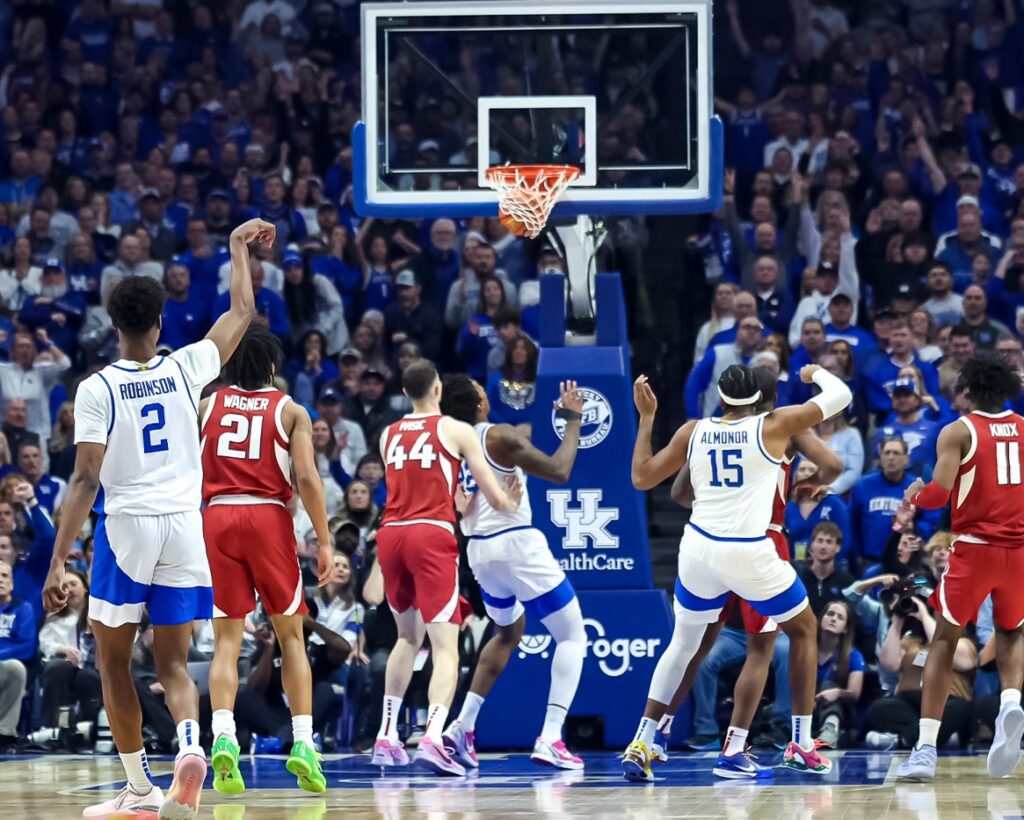
Kentucky and Arkansas Basketball
Much has been made about the defensive struggles for Kentucky this season. Per
BartTorvik.com, they currently sit at number 73 in defensive efficiency rating.
I decided to look at the top 12 teams in the AP rankings to see how Kentucky fared with
those rosters as far as continuity, total college experience and defensive efficiency. I also only
used players that were averaging double digit minutes or limited it to the top 10 players in the
rotations. What I found was pretty interesting.
Out of the top 12 teams, the average number of seasons playing together was just
under 2 (1.97). Also, the average number of years in college basketball for each roster sat at
just over 3 (3.33). Here’s a breakdown for how each roster looked.
Years on the team
- Houston—2.75 seasons
- Marquette—2.7
- Auburn—2.3
- Purdue—2.22
- Michigan State—2.2
- Tennessee—2.0
- Florida—1.9
- Kansas—1.89
- Iowa State—1.8
- Alabama—1.6
- Duke—1.3
- Kentucky—1
Now, we all know how short on time Mark Pope was to put together a roster. It also
didn’t help that he had zero returning players from the season before. That’s going to severely
lower the average number of seasons playing together because they’re all in their first season
at UK. Second, the only team in the top 12 in the country that is getting major contributions
from multiple freshmen is Duke. That’s why their average was 1.3, still Duke still had multiple
players that have been in the program for 2 or more seasons contributing. Next, let’s look at
how those 12 teams stack up with total experience in college basketball.
College Experience
- UK—4.25
- UT—3.9
- Houston—3.75
- Auburn—3.7
- Kansas—3.67
- ISU—3.4
- Alabama—3.3
- Florida—3.1
- MSU—2.9
- Marquette—2.7
- Duke—2.3
- Purdue—2.22
Again, we see most of the teams have at least 3 full seasons in college basketball.
Curiously, Purdue had the same average for both due to the fact they don’t have any transfers
on their team. So while they’re last in college experience, they were fourth for time in the
program.
So, how do these teams stack up in defensive efficiency? First, let’s talk about what the
average defensive efficiency is for the entire top 12 of the AP rankings. Currently, that sits at
18.6, inside that top 20 mark you want to be at when the NCAA tournament ends. However, if
we take Kentucky out of that, the number jumps up to 13.6. Just one other team sits outside
the top 30 in defensive efficiency, and that’s Alabama. That doesn’t tell the whole story for
them or for Florida.
Last season, Alabama finished the year ranked 121 st in defensive efficiency and Florida
was ranked 76 th . Both of these teams returned their core of players from last season, but also
added important pieces from the portal to supplement their weaknesses. For both, it was their
interior defense last season. Let’s take a look at where each team ranks in defensive efficiency
Defensive Efficiency ranking
- Houston—1
- Tennessee—2
- Duke—3
- Kansas—5
- Iowa State—7
- Auburn—12
- Michigan State—17
- Florida—18
- Marquette—20
- Purdue—30
- Alabama—35
- Kentucky—73
As you can see, Kentucky is far and away the worst team in defensive efficiency rating.
They’re also the team with the least amount of continuity in the roster from season to season.
Just 3 of those top 10 in defensive efficiency have less than 2 years together and only Duke is
less than 1.8. So, the entire top 10 has an average of 2.1 seasons of playing together.
What does this all mean? Maybe nothing, maybe everything. I don’t think it’s a
coincidence that the majority of the best defensive teams in the country are also the teams
with the most continuity in their rosters. Kentucky, although the ranking isn’t great, has shown
improvement over the last couple of weeks on the defensive end. They held Texas A&M and
Tennessee under 75 points. So, there’s signs for optimism. Also, Kentucky had played some
really good offensive teams as league play got under way and in the non-conference schedule.
I for one am interested to see how much, if any, improvement comes on the defensive
end of the floor for Coach Mark Pope and Kentucky as there begins to be more roster continuity
in the program.





